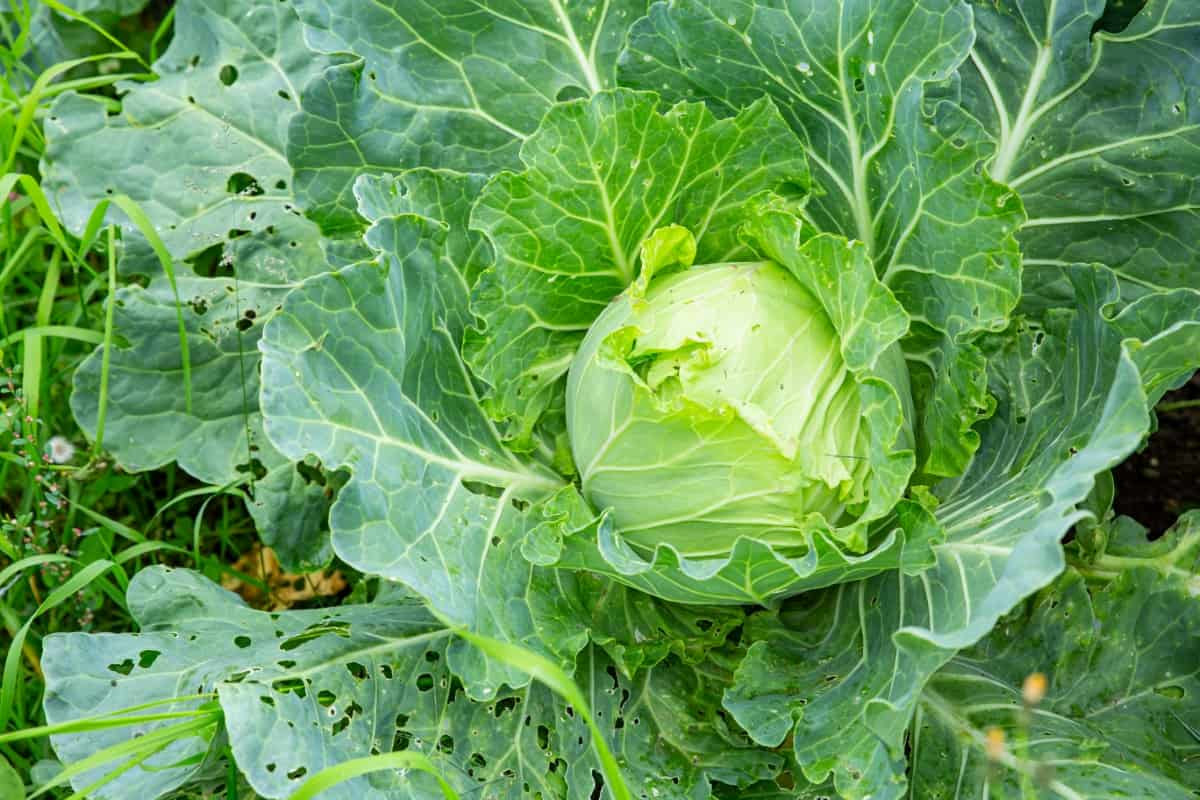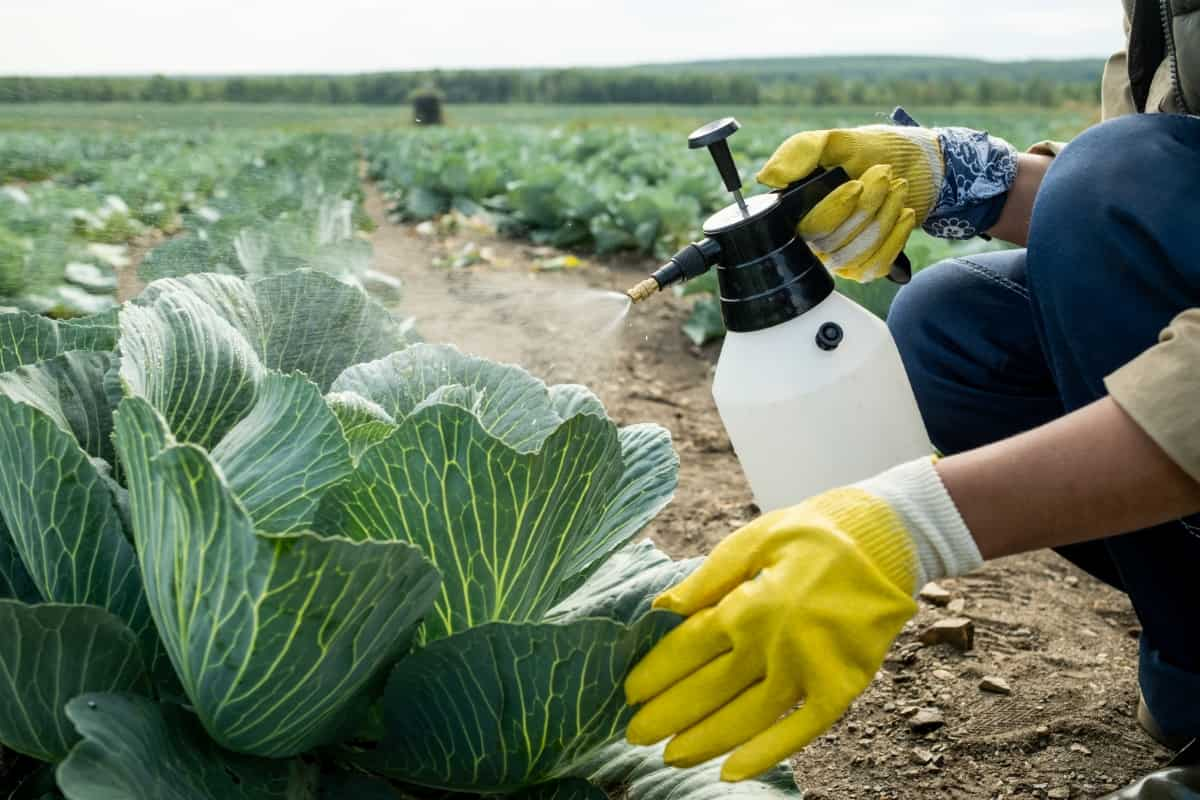Cabbage is a popular and nutritious vegetable that can be enjoyed in many different dishes. Unfortunately, slugs and snails also love cabbage, which can damage your plants significantly if not controlled properly. Fortunately, there are natural and organic ways to protect your cabbage from slugs and snails without resorting to harmful chemicals.

How to Protect Cabbage from Slugs and Snails
Trapping
Several traditional methods effectively control slugs and snails, including beer and milk cups in the garden. A good technique is to dig a little hole in the soil large enough to accommodate the container so that when it is inserted, the lip of the vessel is level with the ground. Pour beer or milk into the container and let it sit overnight. There will be an abundance of creepy crawlies attracted to it, crawling in and drowning. Ensure the bin is empty in the morning and replace it with a new one. A trap should be placed in every square yard; however, if you are prepared to set out multiple traps.
By Using Board
Using boards is a simple and effective way to protect cabbage from slugs and snails. Place a board on the ground near your cabbage plants to do this. Slugs and snails are attracted to the cool, moist environment under the Board. Check under the board regularly and remove any slugs or snails that have taken up residence there. By removing these pests, you can prevent them from reaching your cabbage plants. To make it even more effective, bait your board traps with vegetation such as cut potatoes, grapefruit skins, or even cabbage leaves.
Attracting Natural Predators
Another way to protect cabbage from slugs and snails is to attract natural predators. Some birds, such as thrushes and blackbirds, are known to eat slugs and snails. Attracting these birds to your garden can help control the slug and snail populations. To attract birds, provide them with a food source, such as birdseed or fruit. You can also create a bird habitat by planting trees and shrubs that provide shelter and nesting sites.
Eract a Barrier
Choose a Barrier Material
- Some common barrier materials include copper tape, petroleum jelly, and eggshells. Copper tape creates a mild electric shock when slugs and snails touch it.
- The strips must be at least 2 inches wide to prevent these veggie-eating gastropods from arching over the barrier.
- Petroleum jelly creates a sticky barrier that slugs and snails can’t cross.
- Crushed eggshells create a sharp surface that slugs and snails don’t like to crawl over.
Apply the Barrier Material
Apply the barrier material around the base of the cabbage plant or bed. If you use copper tape, wrap it around the plant pot or bed to completely encircle the plant. If you are using petroleum jelly, apply a thick layer around the plant’s base or bed. If you use crushed eggshells, sprinkle them around the base of the plant or bed.
Companion Planting with Herbs and Flowers
One herb that can be planted to deter slugs and snails is thyme. Thyme contains an oil toxic to slugs and snails, making it an effective repellent. Other herbs that can be planted include rosemary, sage, and mint. These herbs also contain oils that repel slugs and snails. Planting flowers is another effective way to protect cabbage from slugs and snails.
Marigolds, for example, are known to repel slugs and snails. The strong scent of marigolds confuses the pests, making it difficult for them to locate the cabbage plants. Other flowers that can be planted include lavender, chrysanthemums, and nasturtiums.
Use Black Plastic Mulch
Black plastic mulch creates a barrier between the soil and the cabbage. When slugs and snails encounter the plastic, they cannot climb over it, which prevents them from reaching the cabbage. In addition, the plastic helps retain moisture in the soil, improving plant growth. First, to use black plastic mulch in your cabbage garden, prepare the soil by removing any weeds or debris.
In case you missed it: A Step-By-Step Guide for Growing Red Cabbage Microgreens: DIY in Simple Way from Seeds in Containers

Then, lay the black plastic over the soil and secure it with stakes or rocks. Cut holes in the plastic where you want to plant your cabbage seedlings, then plant them as you normally would. As the cabbage grows, the black plastic will help keep the soil warm and moist, improving plant growth. Additionally, because the plastic prevents slugs and snails from reaching the cabbage, you will likely see less damage to your crop.
Avoid Organic Mulch
Cabbage is a popular vegetable that many people enjoy. However, slugs and snails can be a nuisance to gardeners who want to protect their cabbage plants. One effective way to protect your cabbage from slugs and snails is to avoid using organic mulch. Organic mulch, such as leaves, straw, and grass clippings, can attract slugs and snails to your garden. These pests thrive in damp environments, and organic mulch provides a perfect habitat.
When you use organic mulch around your cabbage plants, you invite slugs and snails to come and feast on your crops. Using non-organic mulch such as gravel, pebbles, or even crushed eggshells is best to protect your cabbage from these pests. These materials create a barrier that slugs and snails cannot easily cross, thus protecting your cabbage plants. Non-organic mulch also helps to retain moisture in the soil, which is beneficial for the growth of your cabbage.
Planting Cabbage in Raised Beds
Raised beds are an excellent method to protect your cabbage from slugs and snails. Planting your cabbage in a raised bed creates a barrier between the pests and your plants. The raised bed also provides better plant drainage, which can help prevent root rot. To create a raised bed for your cabbage, you will need to select a location that gets plenty of sunlight. You will also need to make sure that the soil is well-draining.
You can create the raised bed by building a frame out of wood or by using cinder blocks. Once you have created the bed, you must fill it with soil. When you are ready to plant your cabbage, space the plants out evenly in the bed. This will help prevent overcrowding, leading to disease and pest problems. Make sure to water your plants regularly and add fertilizer as needed.
Spray a Mixture of Garlic or Vinegar onto the Cabbage Leaves
One effective method is to spray a mixture of garlic or vinegar onto the cabbage leaves. Garlic is a natural repellent that can help to deter slugs and snails from feeding on the plants. Vinegar works similarly, creating an acidic environment that these pests find unappealing. Mix one part of garlic or vinegar with three parts of water in a spray bottle to create the spray.
In case you missed it: How to Grow Chinese Cabbage: A Step-By-Step Planting Guide

Shake well to combine, and then spray directly onto the cabbage leaves. Be sure to cover both the top and bottom of the leaves to ensure full coverage. The spray creates an unpleasant taste and smell for slugs and snails. When they come into contact with the mixture, they will likely move away from the plants and seek a more hospitable environment. It’s important to note that this method may need to be repeated regularly, especially after rainfall or if the cabbage leaves are wet.
Conclusion
In summary, several natural and organic control methods can protect cabbage from slugs and snails. These include planting herbs and flowers that slugs and snails dislike, creating barriers around your plants, handpicking, and using beer traps. Using these methods, you can keep your cabbage plants healthy and pest-free without harmful chemicals.
- Feed Your Flock for Less: Top 10 Tips to Save on Chicken Feed
- Ultimate Guide to Ossabaw Island Hog: Breeding, Raising, Diet, and Care
- Hatching Answers: The Top 10 Reasons Your Chickens Aren’t Laying Eggs
- Eggs and Economics: Breaking Down the Cost of Raising Backyard Chickens
- Defend Your Greens: Proven Methods to Keep Iguanas Out of Your Garden
- Ultimate Guide to Cinnamon Queen Chicken: A Comprehensive Guide for Beginners
- Ultimate Guide to California Tan Chicken: Breeding, Raising, Diet, Egg-Production and Care
- Ultimate Guide to Marsh Daisy Chicken: Breeding, Raising, Diet, and Care
- 10 Types of Chicken Farming Businesses You Can Start for Profits